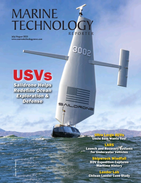
Novielli Boats Unveils Plans for New Production Facility
efficient workflows, driving output higher while preserving the precise craftsmanship that boaters have come to rely on.Core operations at Novielli bring together composite specialists, engineers, assembly line teams, and quality control experts—an integrated approach that will also define the new Mexico facility. By prioritizing ongoing training, the company prepares its teams to work with modern boatbuilding methods, from precision cutting to advanced infusion technologies. Together, these efforts maintain consistent quality across every vessel leaving the factory floor.In addition to boosting
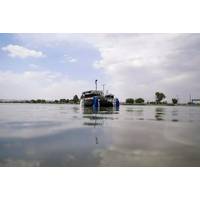
UTEP Researchers put Autonomous Survey Boat to the Test
at UTEP — just to make sure it could float,” laughed Fernando Sotelo, study co-author and now UTEP alumnus. Over the course of a year, Sotelo refined the aluminum watercraft, a 3-foot-by-3-foot circular craft thatrests on a thick black inner tube, testing it in various environments like New Mexico’s Grindstone and Elephant Butte lakes.His goals included extending the boat’s hours of operation and reliability; and making it fully autonomous and responsive to potential environmental issues like wind speed and temperature flux. Now, a failsafe can detect when batteries are
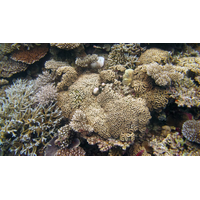
Study: How Much of Corals’ Nutrition Comes From Hunting
of their nutrients come from microscopic algae living inside of them, but if those algae aren’t creating enough sustenance, corals can use their tentacles to grab and eat tiny prey swimming nearby.A new study from researchers at the Woods Hole Oceanographic Institution (WHOI), the University of New Mexico, and Scripps Institution of Oceanography is revealing that more of corals’ nutrients come from this sort of hunting than previously expected, information that may help predict the fate of coral reefs as global ocean temperatures rise. The study published Sept. 17, 2019, in the journal Functional
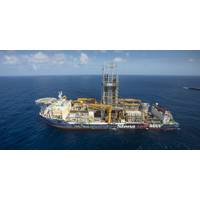
Exxon Starts Drilling at Offshore Guyana Projects
and Production Guyana Limited is operator and holds 45 percent interest in the Stabroek Block. Hess Guyana Exploration Ltd. holds 30 percent interest and CNOOC Nexen Petroleum Guyana Limited holds 25 percent interest.Exxon said in March that projects in Guyana and the Permian Basin region of Texas and New Mexico, as well as refining and chemical plant expansions, should drive earnings gains
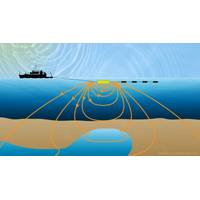
Fresh Water below the Seafloor?
Lizarralde have been anxiously awaiting the go-ahead on a proposal to drill water samples hundreds of feet below the shelf off Martha’s Vineyard to prove that subsea freshwater deposits are there and to determine their sources. That drilling proposal has been led by Mark Person, a hydrologist at New Mexico Institute of Mining and Technology, and Brandon Dugan at the Colorado School of Mines. “I’d argue that these freshwater reserves ultimately could be tapped and be a resource,” Evans said. “If they are isolated deposits of fossil glacial fresh water, they’d
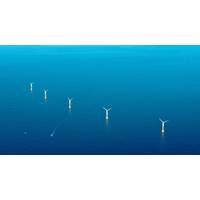
Wind Surpasses Hydro as Largest US Renewable Energy Source
for third place at the end of 2016. The first offshore wind project in the United States also came online in the fourth quarter, the 30 MW Block Island wind farm off the coast of Rhode Island. More than 10,000 MW of wind is under construction in the United States, about half of which is in Texas. New Mexico's wind industry is growing rapidly, with 1,300 MW under construction. Once completed, those projects will double the size of New Mexico's installed wind capacity. Corporations and others outside the utility industry have become major purchasers of wind energy, accounting for 39 percent of capacity
FairfieldNodal Expands Multi-Client Library in Delaware Basin
FairfieldNodal has completed acquisition of an additional 347 square miles of multi-client 3D data in Eddy County, New Mexico. The new surveys – DB4A (237 square miles) and DB4A West (110 square miles) – enhance the company’s ongoing Delaware Basin Regional Imaging Project. Since 2011, FairfieldNodal’s Data Licensing Division has acquired more than 2,500 square miles of high-quality, long offset and wide azimuth nodal data in the Delaware Basin. In addition to the DB4A and DB4A West projects, FairfieldNodal recently completed acquisition of Barilla Draw, a 400
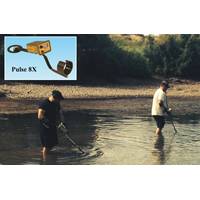
Homeland Security Selects Top Underwater Metal Detector
effectively do their job. An essential tool for locating evidence disposed of in a waterway, metal detectors routinely assist public safety divers in finding weapons, shell casings, stolen objects and explosive devices. One agency having success with the underwater metal detector is the New Mexico State Police. The NMSP Search and Recovery Dive Team was established in 1963 in response to increasing demands for law enforcement divers to respond to drownings and underwater recovery of property and evidence. The team currently consists of nineteen officers stationed throughout the state. Although
Scientists Produce Data from Largest Single Volcano
Tamu Massif is a volcano the size of New Mexico and lurks 6,500 feet beneath the surface of the Pacific Ocean. During their 36 day expedition, the science team undertook a survey of immense proportions mapping an area nearly one million square kilometers in size. Not only were they able to gather new high-resolution acoustic imagery of this little known volcano, but they also collected 1.7 million magnetic measurements to better understand how such a large volcano was formed. The rocks of the giant volcano record the Earth’s magnetic field at the time they were erupted, giving scientists

 August 2025
August 2025


